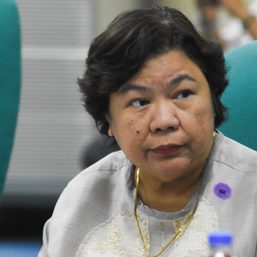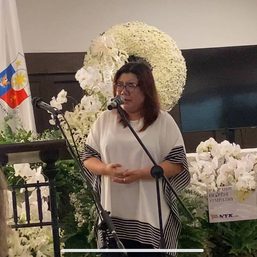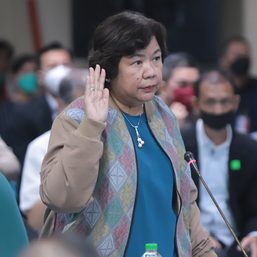SUMMARY
This is AI generated summarization, which may have errors. For context, always refer to the full article.

MANILA, Philippines – Over 80 Japanese employers are seeking to hire more Filipino workers, citing their “excellent work ethic and friendly disposition,” the Philippine Department of Migrant Workers (DMW) said on Thursday, February 9.
Migrant Workers Secretary Susan Ople met with Japanese employers and Filipino workers in Japan during her work as part of the delegation of President Ferdinand Marcos Jr.’s “official working visit” to Japan, which began on Wednesday, February 8.
“The general sentiment among Japanese employers was that Filipino workers brightened up their workplaces, and were highly reliable and trainable,” Ople said.
Ople said that a “Japan desk” would be created in the Office of the Secretary to fast-track the needs of both Japanese employers and OFWs with Japan as their host country.
The employers attended a consultation meeting organized by the Migrant Workers Office (formerly known as the Philippine Overseas Labor Office) in Osaka, led by labor attaché Elizabeth Estrada.
After the employers’ meeting, the office also held a dialogue with overseas Filipino workers (OFWs) based in Japan under the Technical Internship Training Program (TITP) and the Special Skilled Worker (SSW) programs. Ople attended both meetings.
According to the DMW, the TITP aims to accept workers from various countries “to acquire industrial and vocational skills in Japan to contribute to the improvement of their occupational lives when they return to their home countries.”
Meanwhile, the SSW allows the Japanese government to recruit foreign workers to fill employment quotas in 14 industrial fields.
The DMW said that Filipino workers assured Ople that “they are being treated well.” They also reportedly said they would opt to continue working in Japan if given the chance by their employers and the Japanese government.
“Mababait po ang aming employers. Minsan, sila pa nagdadala ng pagkain para sa amin,” the DMW quoted an employee of SuperCourt as saying. (Our employers are kindhearted. Sometimes, they even bring us food.)
DMW data shows that workers’ salaries in Japan range from 130,000 yen (P54,548) for entry-level TITP trainees, and up to 900,000 yen (P377,640) for specialized positions occupied by skilled workers.
The migrant workers secretary said that a major challenge OFWs face is passing the Japanese language proficiency test. Under the Japan-Philippines Economic Partnership Agreement, Filipinos can take the Preparatory Japanese Language Training, which is a six-month training on Japanese language basics.
“We will look into these bottlenecks and obstacles and try to untangle them one by one. Japan has proven to be a reliable partner in overseas employment,” Ople said.
Around 58,400 or 3.2% of the 1.83 million OFWs around the world are in Japan as of 2021, according to the Philippine Statistics Authority.
Ople said in a January Malacañang briefing that the DMW aimed to deploy more workers in 2023, noting that the Philippines fielded 486,673 OFWs from July to November 2022.
– Rappler.com
Add a comment
How does this make you feel?











![[Hindi ito Marites] Japan: From enemy to bestie](https://www.rappler.com/tachyon/2024/07/Hindi-ito-Marites-TC-ls-7.jpg?resize=257%2C257&crop=415px%2C0px%2C1080px%2C1080px)

![[Rappler’s Best] America](https://www.rappler.com/tachyon/2024/07/rapplers-best-america.jpg?resize=257%2C257&crop=458px%2C0px%2C1080px%2C1080px)







There are no comments yet. Add your comment to start the conversation.